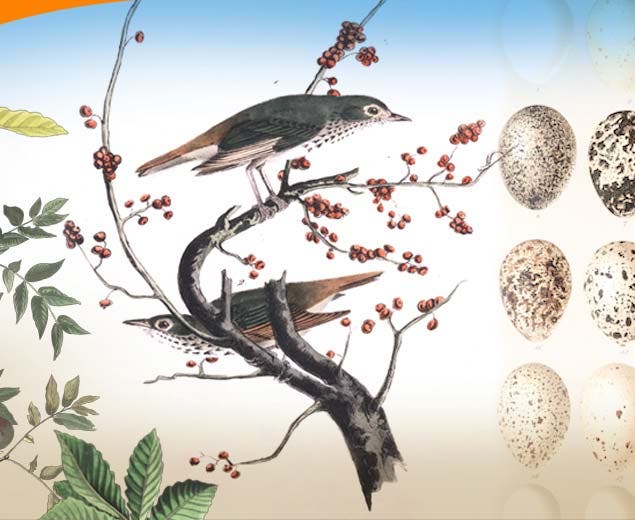
Drawn from Nature
The Making of a Field Guide
Roger Tory Peterson
Roger Tory Peterson, a native of Jamestown, New York, developed the idea for a field guide when he moved to New York City after high school. He joined the famed Bronx County Bird Club where he met the field ornithologist, Ludlow Griscom. Under Griscom’s tutelage, Peterson became fascinated by the field ornithologist’s split-second ability to identify bird species with the aid of binoculars rather than a rifle. Many bird books were on the market, but none of them provided a visual guide “wherein live birds may be run down by impressions, patterns, and distinctive marks, rather than by the anatomical differences and measurements that the collector would find useful.”
A Field Guide to the Birds
Roger Tory Peterson published the first edition of A Field Guide to the Birds in April 1934. The 26-year-old artist and birdwatcher limited his first book to birds found in the eastern United States. The majority of images were in black and white: the volume included only four color plates. Peterson emphasized visual identification, noting that, “in many instances the pictures tell the story without help from the letterpress.” He limited text in his guide to describing only those field marks that would aid in comparing similar-looking species. This “boiling down” of information had the added benefit of reducing the size of the book.
An Immediate Best-seller
The publisher, Houghton Mifflin, worried about the profitability of selling a bird guide during the Great Depression. They printed only 2,000 copies and told Peterson they would be unable to pay royalties on the first 1,000 copies. It was an undue concern. The book was an immediate success, selling out the initial print run within a week. Though not the first book designed for field identification, Peterson’s innovations created the look and feel of the modern guide.
